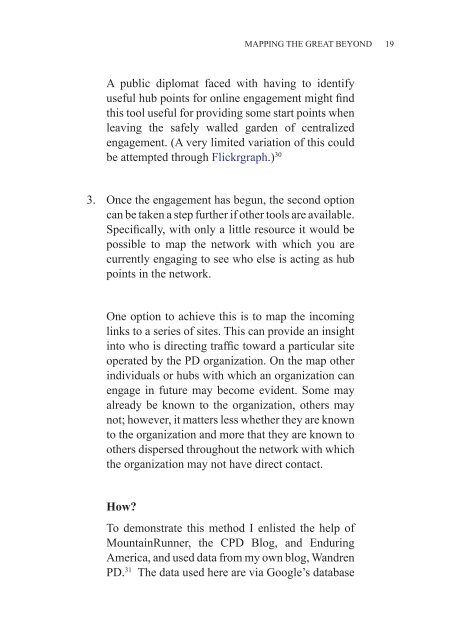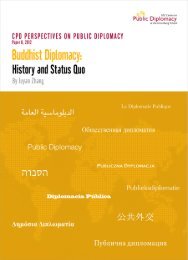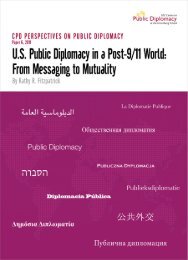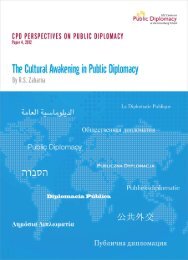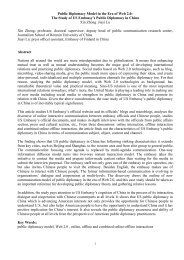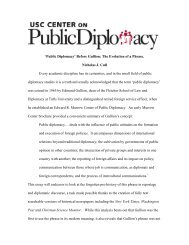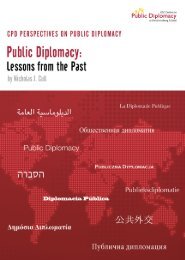Mapping the Great Beyond: Identifying Meaningful Networks in
Mapping the Great Beyond: Identifying Meaningful Networks in
Mapping the Great Beyond: Identifying Meaningful Networks in
Create successful ePaper yourself
Turn your PDF publications into a flip-book with our unique Google optimized e-Paper software.
MAPPING THE GREAT BEYOND 19<br />
A public diplomat faced with hav<strong>in</strong>g to identify<br />
useful hub po<strong>in</strong>ts for onl<strong>in</strong>e engagement might f<strong>in</strong>d<br />
this tool useful for provid<strong>in</strong>g some start po<strong>in</strong>ts when<br />
leav<strong>in</strong>g <strong>the</strong> safely walled garden of centralized<br />
engagement. (A very limited variation of this could<br />
be attempted through Flickrgraph.) 30<br />
3.<br />
Once <strong>the</strong> engagement has begun, <strong>the</strong> second option<br />
can be taken a step fur<strong>the</strong>r if o<strong>the</strong>r tools are available.<br />
Specifically, with only a little resource it would be<br />
possible to map <strong>the</strong> network with which you are<br />
currently engag<strong>in</strong>g to see who else is act<strong>in</strong>g as hub<br />
po<strong>in</strong>ts <strong>in</strong> <strong>the</strong> network.<br />
One option to achieve this is to map <strong>the</strong> <strong>in</strong>com<strong>in</strong>g<br />
l<strong>in</strong>ks to a series of sites. This can provide an <strong>in</strong>sight<br />
<strong>in</strong>to who is direct<strong>in</strong>g traffic toward a particular site<br />
operated by <strong>the</strong> PD organization. On <strong>the</strong> map o<strong>the</strong>r<br />
<strong>in</strong>dividuals or hubs with which an organization can<br />
engage <strong>in</strong> future may become evident. Some may<br />
already be known to <strong>the</strong> organization, o<strong>the</strong>rs may<br />
not; however, it matters less whe<strong>the</strong>r <strong>the</strong>y are known<br />
to <strong>the</strong> organization and more that <strong>the</strong>y are known to<br />
o<strong>the</strong>rs dispersed throughout <strong>the</strong> network with which<br />
<strong>the</strong> organization may not have direct contact.<br />
How?<br />
To demonstrate this method I enlisted <strong>the</strong> help of<br />
Mounta<strong>in</strong>Runner, <strong>the</strong> CPD Blog, and Endur<strong>in</strong>g<br />
America, and used data from my own blog, Wandren<br />
PD. 31 The data used here are via Google’s database


